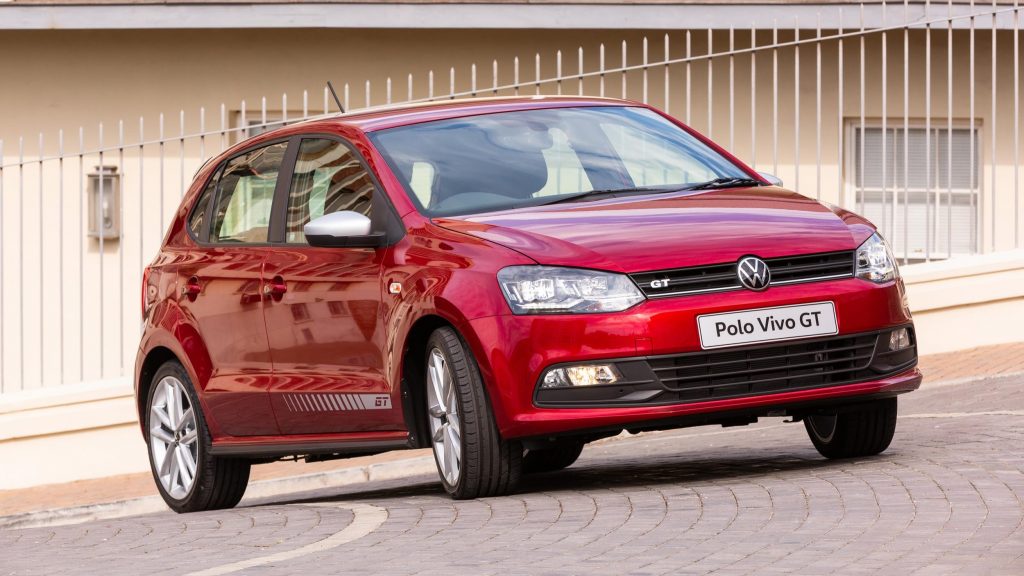Vivo or Polo? As a uniquely South African offering, the question of owning a fifth- or sixth-generation version of VW’s supermini is real.
For decades, VW’s strategy of producing a legacy and current version of the Polo for South African buyers has been hugely successful. The Vivo brand is never seen as outdated technology, it represents value. And for those with aspiration, there’s the incentivise to upsell to Polo.
No ad to show here.
But what is the comparative offering for Polo versus Vivo, into 2024? A week each in the latest Polo Life and Vivo GT, proved that this decision is more paradox, than obvious.
Newer platform – or more kit?
As with any comparative test between Polo and Vivo, there are both obvious and more intrinsic differences, that reveal themselves. Cost is the primary consideration and decision point for most buyers.
Vivo GT is R346 900 and offers more engine power and standard kit than Polo Life, at R391 100. What you can’t evaluate from the pricing difference between these two VW superminis is the benefit of platform engineering and advancement from generation to generation.
VW spent enormous amounts of its R&D resources to develop the MQB platform, which is what Polo Life is built upon. In the market for supermini hatchbacks, VW’s cars feel more stable at speed, track with greater confidence over coarse road surfaces, and are generally quieter at cruising speeds. All that is the result of obsessive mechanical engineering during the R&D phase. It’s not something which can be retrofitted.
At highway speeds and when rounding high-speed corners, you feel the enhanced stability and tracking confidence of Polo Life, versus Vivo GT. That’s a fundamental result of its more advanced engineering.
The wheel and tyre issue
But the reality for South African supermini owners is that country’s road surfaces are becoming more challenging and risky to drive on. And when encountering potholes, broken tar, and mid-corner bumps, the Vivo has always been a touch more robust than its equivalent Polo.
With the GT version, that’s not quite the case. It rides on 15mm lowered suspension, and rolls lowish-profile tyres on 17-inch rims, which don’t do much to absorb road surface harshness. The 215/40 tyres transfer a lot of road surface imperfections into the cabin, and although they do add mid-corner grip and enhance handling on excellently surfaced roads, those are few and far between in South Africa.
Regarding ride, handling agility, tracking stability and pothole strike survivability, the Polo Life, with its more conservative wheels and larger volume tyres, are better suited to local conditions than VW’s Vivo GT.
Does the Vivo GT extra gear matter?
The most significant difference between these two VW superminis, are their power- and drivetrains. Both are powered by 1-litre engines, but GT is more powerful and features a six-speed manual gearbox.
Polo Life’s 1-litre triple is only good for 70kW and has a five-speed gearbox. That means the Vivo GT, with a peak power output of 81kW and an additional gear, accelerated better, felt more responsive, and is more ‘fun’ to drive.
If a blend of performance and fuel economy is your basis for comparison, the Vivo GT offers nearly what VW’s third-generation GTI did in the early to mid-1990s. It is a slightly less refined, but quicker car, than its Polo Life sibling.
So which one, then?
There’s no question that the Life feels a touch more sophisticated inside, with better materials and trim alignment, but it is very marginal.
If you plan on doing plenty of weekend getaways and extra-urban driving in a VW supermini, Vivo GT, despite being the ‘older’ technology car, is superior to a Polo Life 70kW. The superior performance resources of its 81kW engine and six-speed gearbox make it more confident at overtaking and highway cruising.
It’s a pity that the appearance-focused wheel and tyre choice aren’t aligned with the reality of day-to-day South African driving – especially considering the GT doesn’t have a full-size spare tyre onboard. But it is cheaper than the more modern Polo Life and offers better overtaking performance, something which is deeply valuable on South Africa’s very competitive highways.
